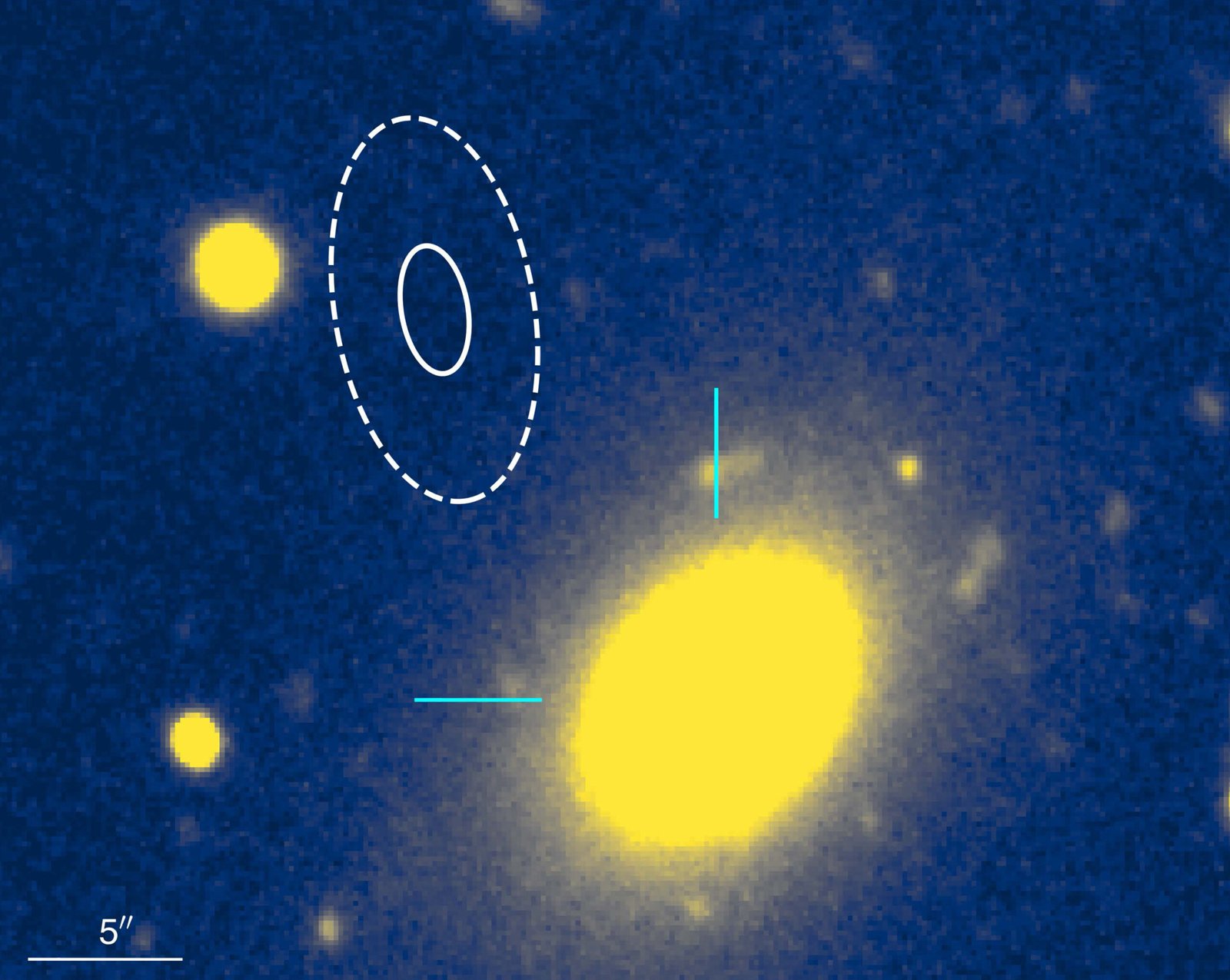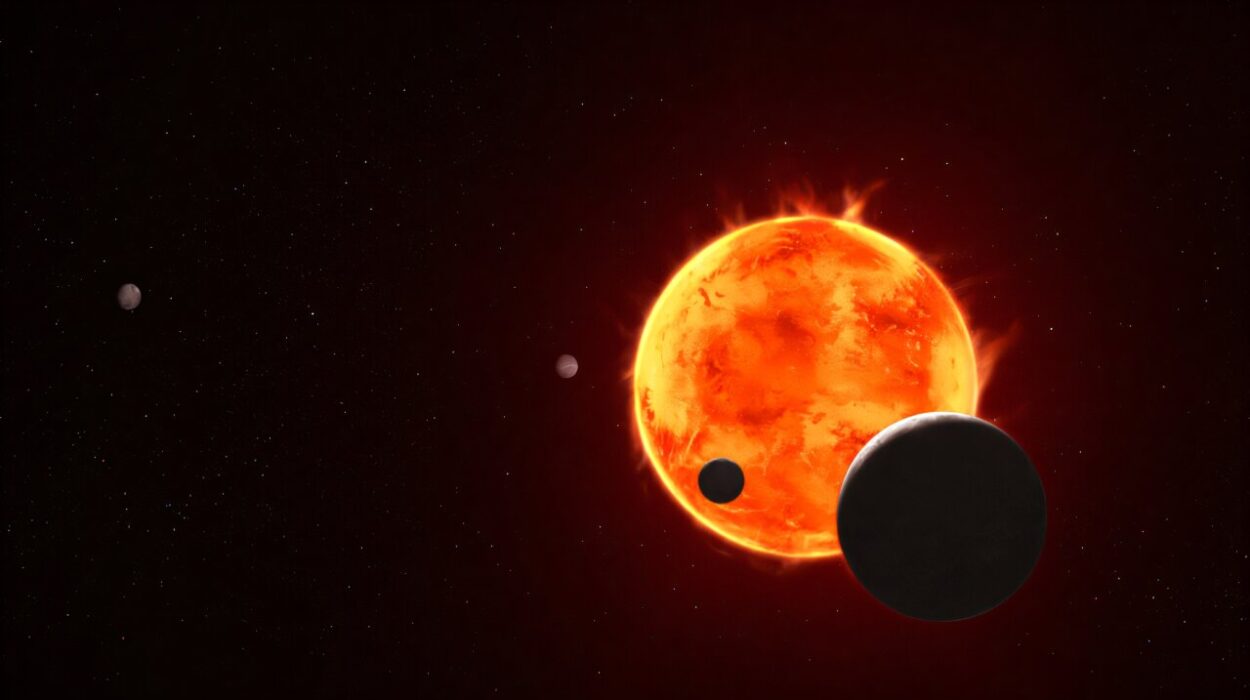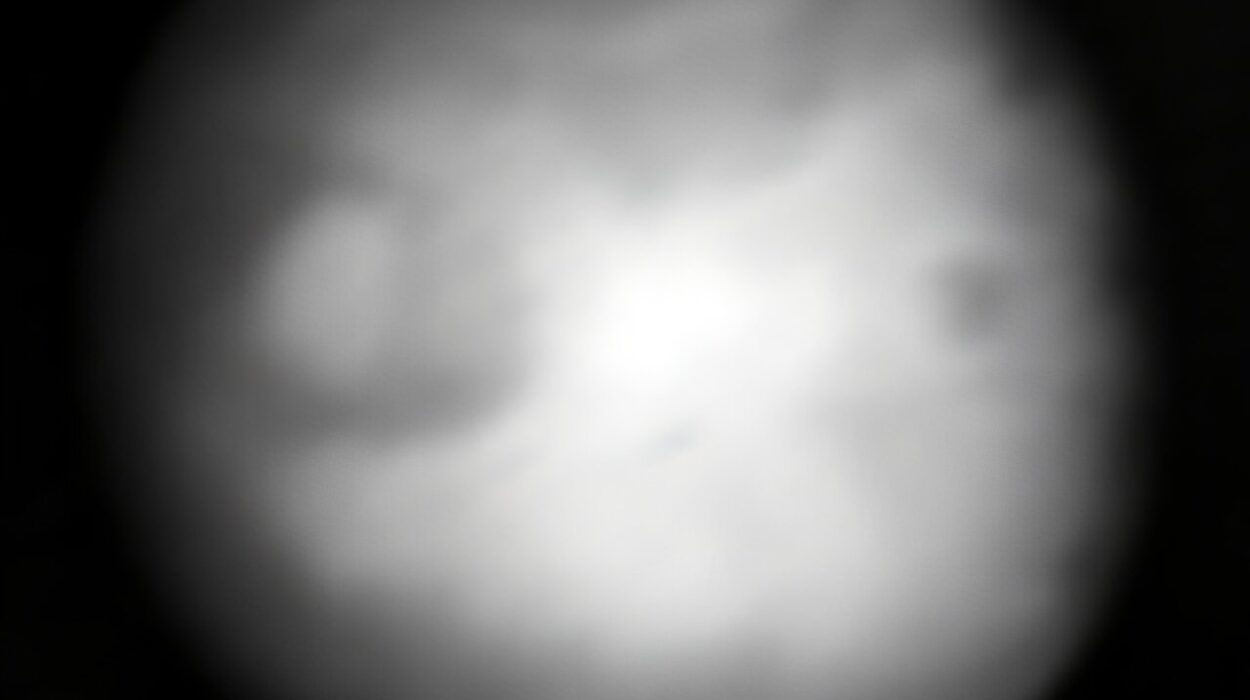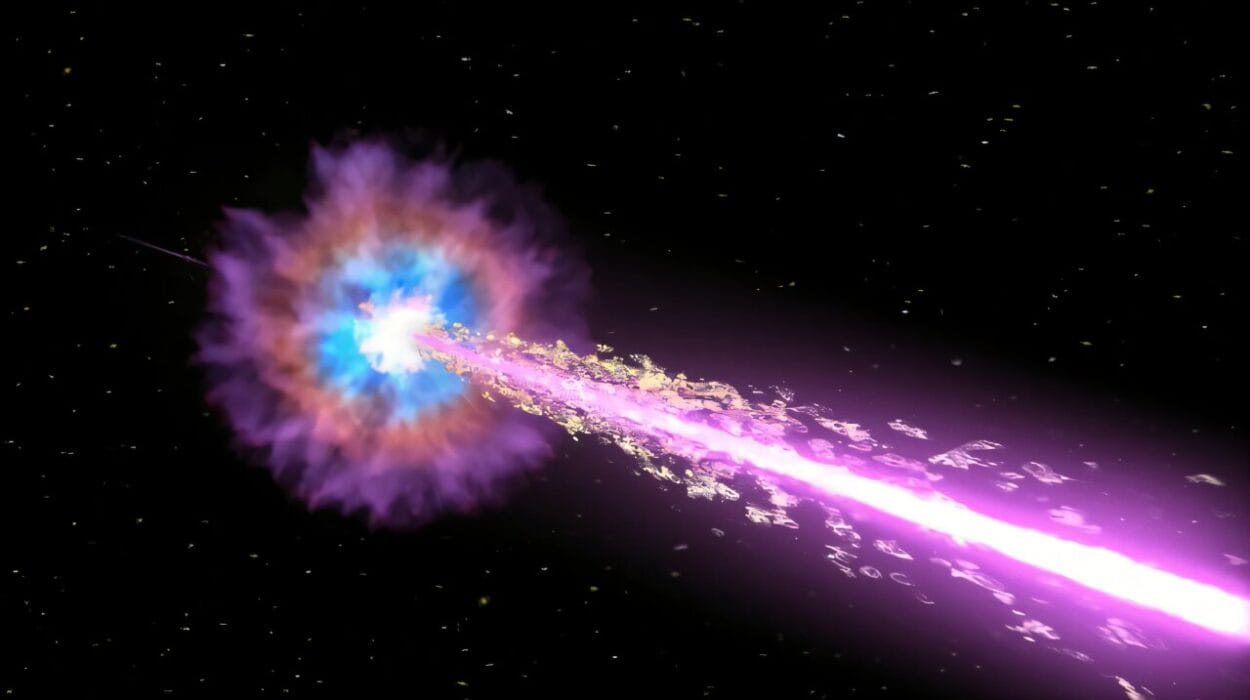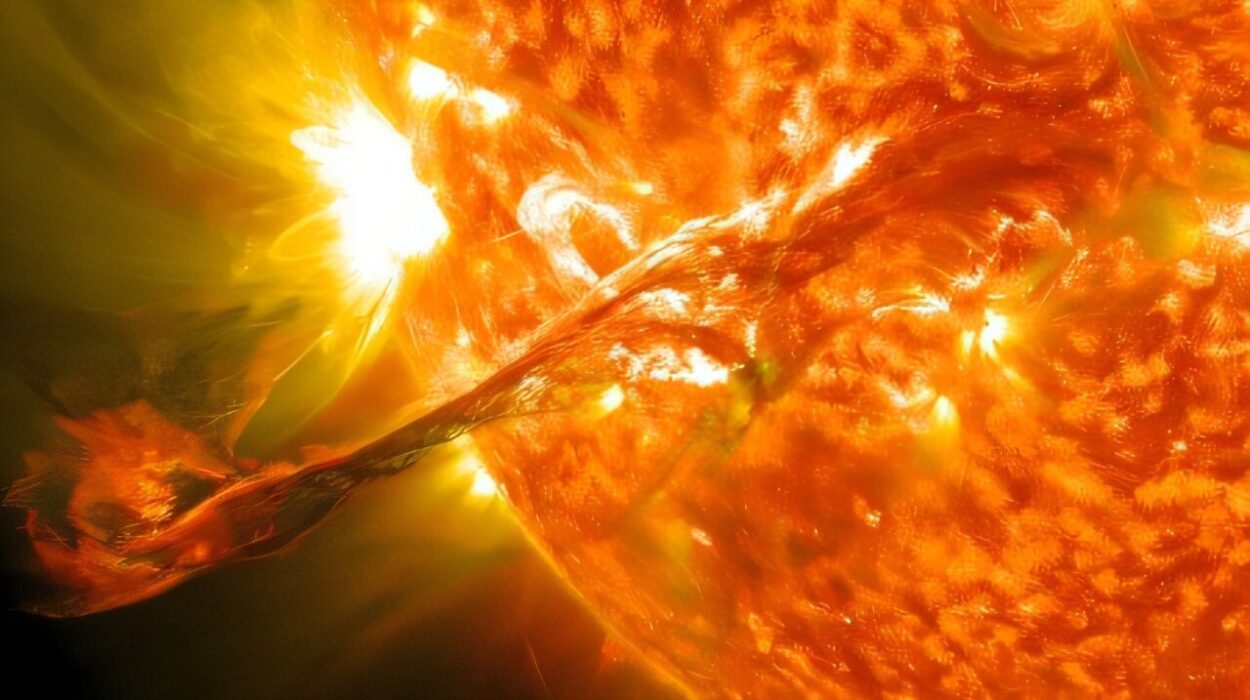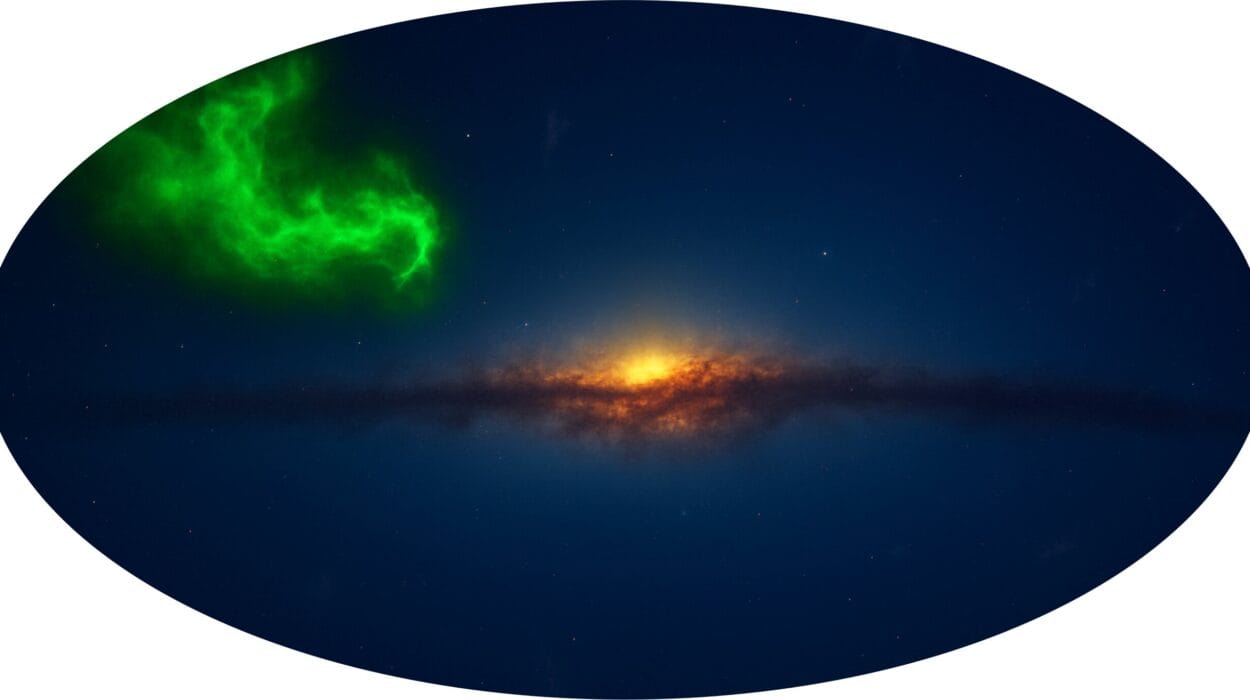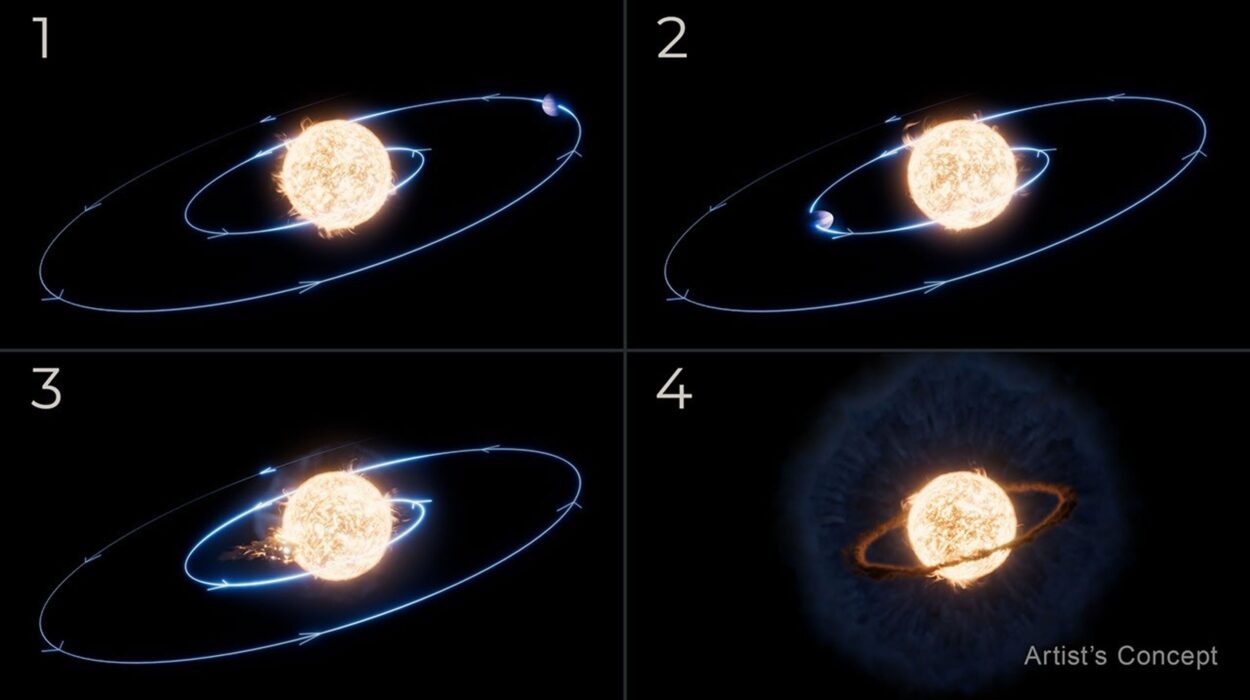Astronomers and astrophysicists have long been captivated by the enigma of Fast Radio Bursts (FRBs)—the intense, fleeting bursts of radio waves that seem to emanate from deep space. These bursts are incredibly powerful, lasting just milliseconds, yet their origins remain one of the most puzzling mysteries in astrophysics. Last summer, Calvin Leung, a Miller Postdoctoral Fellow at the University of California, Berkeley, was eager to investigate the source of one such burst, FRB 20240209A, using a newly commissioned radio telescope. His team’s goal was to pinpoint its origin with unprecedented precision, using an innovative method of triangulation, combining data from several telescopes to locate the source to a remarkable accuracy.
Leung’s team had a specific target in mind. The burst originated somewhere in the northern constellation Ursa Minor, a region of the sky that, in theory, should hold crucial clues to the mysteries of FRBs. Leung had written much of the computer code that made this precise triangulation possible. As the team refined their data, the excitement quickly turned into something far more perplexing. Their collaboration with the Canadian Hydrogen Intensity Mapping Experiment (CHIME) and optical telescopes revealed that the source of the burst was not from the expected kind of stellar environment, but rather, from an unusual location—a long-dead elliptical galaxy. This was a revelation that threw existing theories into question and invited new hypotheses about the nature of these bursts.
The Unexpected Discovery
The discovery of FRB 20240209A came with an unexpected twist. Astronomers had anticipated finding the burst’s source in a magnetar, a highly magnetized neutron star left over from the collapse of a massive star. This type of stellar remnant had long been theorized as the most plausible origin for FRBs. Magnetars are known to produce powerful bursts of radiation, including the millisecond-long radio waves seen in FRBs. However, the location of FRB 20240209A was in a galaxy that, by all accounts, should not harbor the kind of young, energetic star remnants thought to produce these bursts.
The galaxy in question is an elliptical galaxy located about 2 billion light years away from Earth, a massive, ancient structure dating back over 11 billion years. Such galaxies are typically devoid of the young, hot stars that create the ideal conditions for the formation of magnetars. Rather than being a young, star-forming galaxy, the elliptical galaxy housing FRB 20240209A is old and largely inactive, having long ceased the process of star formation. This raised a critical question: How could a magnetar exist in such a place, so far removed from the star formation activity that is thought to create these kinds of cosmic phenomena?
Vishwangi Shah, a doctoral student at McGill University in Montreal and a key collaborator on this research, was instrumental in refining Leung’s calculations. Shah, who was the corresponding author on the paper detailing the discovery, was struck by the implications of the location of FRB 20240209A. “This is not only the first FRB to be found outside a dead galaxy, but compared to all other FRBs, it’s also the farthest from the galaxy it’s associated with,” Shah said. This discovery challenges previous assumptions about the environments in which FRBs can occur and raises fundamental questions about the nature of these energetic bursts.
The Role of New Technology
The ability to precisely locate the source of this FRB was made possible by CHIME, a radio telescope array located in Penticton, British Columbia, and its new companion telescopes, known as outriggers. The CHIME array, already a powerful tool in the quest to understand FRBs, has been augmented by several outriggers to improve its ability to triangulate the location of bursts. These outriggers are strategically positioned to enhance the detection capability of CHIME, giving scientists the ability to locate FRBs with far more precision than previously possible.
Leung, who is a lead developer of the outrigger telescopes, emphasized the significance of this advancement. “When paired with the three outriggers, we should be able to accurately pinpoint one FRB a day to its galaxy, which is substantial,” he said. This level of precision is a major leap forward, as it allows astronomers to move from simply detecting bursts to isolating their precise origins in the cosmos. The addition of a third outrigger array, which went online at Hat Creek Observatory in Northern California, promises to further enhance the ability to pinpoint FRBs, offering a 20-fold improvement in accuracy compared to CHIME’s previous setup.
This increased precision allows optical telescopes to follow up on the radio data with greater accuracy, providing more detailed insights into the type of star groups or galaxy environments that might give rise to these mysterious bursts. Despite detecting over 5,000 FRBs to date, most of them have remained difficult to trace to a specific galaxy, making it challenging to confirm whether magnetars—or some other stellar phenomenon—are responsible for their origins.
Shah’s work, which averaged several bursts from FRB 20240209A, improved the accuracy of the location pinpointed by the telescopes, and provided a more refined understanding of its location. By July 2024, the team had recorded 21 more bursts from the source, and the precision of the location was confirmed with 20 times greater accuracy than previous attempts.
A New Theory Emerges
The findings of this study have prompted astronomers to reconsider the theories that have long linked FRBs to star-forming galaxies. The location of FRB 20240209A raises new possibilities about the environments where these bursts can originate. One of the emerging ideas is that the FRB may have originated from a globular cluster—a dense region of old, dead stars located outside the galaxy. Globular clusters are home to some of the oldest stars in the universe, and some researchers speculate that a magnetar could have formed in one of these clusters, providing a new pathway to explain the origin of FRBs.
In fact, FRB 20240209A could be only the second FRB ever linked to a globular cluster, although the previous case was associated with a live galaxy, not an ancient elliptical one like the one in this discovery. This raises intriguing possibilities for astronomers, who now have to explore whether such events could occur in regions where new star formation has long since ceased. “This result challenges existing theories that tie FRB origins to phenomena in star-forming galaxies,” Shah explained. “The source could be in a globular cluster, a dense region of old, dead stars outside the galaxy.”
This theory, if proven, could radically change our understanding of FRBs and the environments that give rise to them. It could also help scientists unlock further clues about the processes that govern stellar evolution, especially in regions where star formation has long since ended.
Looking Ahead: The Future of FRB Research
As FRB research progresses, the role of the CHIME array and its outriggers will be crucial. Leung and his collaborators believe that the advancements in technology will allow for an unparalleled level of astrometry, enabling astronomers to map the universe’s most mysterious and energetic events with a level of precision that was previously unimaginable. According to Leung, “CHIME and its outrigger telescopes will let us do astrometry at a level unmatched by the Hubble Space Telescope or the James Webb Space Telescope. It’ll be up to them to drill down to find the source.”
The discovery of FRB 20240209A is just one example of the remarkable insights that are possible when new technologies are brought to bear on some of the universe’s most challenging questions. With improved precision and more powerful instruments, astronomers are beginning to peel back the layers of mystery surrounding fast radio bursts, offering us the chance to not only trace their origins but also to learn more about the large-scale structure of the universe itself.
Conclusion
The discovery of FRB 20240209A has significantly expanded our understanding of fast radio bursts, challenging existing theories about their origins. Located in the outskirts of a long-dead elliptical galaxy, this burst defies expectations, suggesting that FRBs may not only originate from star-forming regions but also from ancient, inactive areas like globular clusters. The precise location of this burst, achieved through advanced triangulation methods using the CHIME array and its outriggers, marks a major breakthrough in FRB research. As astronomers continue to refine their methods and improve precision, the study of these bursts promises to unlock crucial insights into the large-scale structure of the universe and the processes that govern stellar evolution. The ongoing exploration of FRBs, particularly through advanced radio telescopes, will likely continue to reshape our understanding of the cosmos, opening new avenues for discovery in astrophysics and cosmology.
References: Vishwangi Shah et al, A Repeating Fast Radio Burst Source in the Outskirts of a Quiescent Galaxy, The Astrophysical Journal Letters (2025). DOI: 10.3847/2041-8213/ad9ddc
T. Eftekhari et al, The Massive and Quiescent Elliptical Host Galaxy of the Repeating Fast Radio Burst FRB 20240209A, The Astrophysical Journal Letters (2025). DOI: 10.3847/2041-8213/ad9de2
